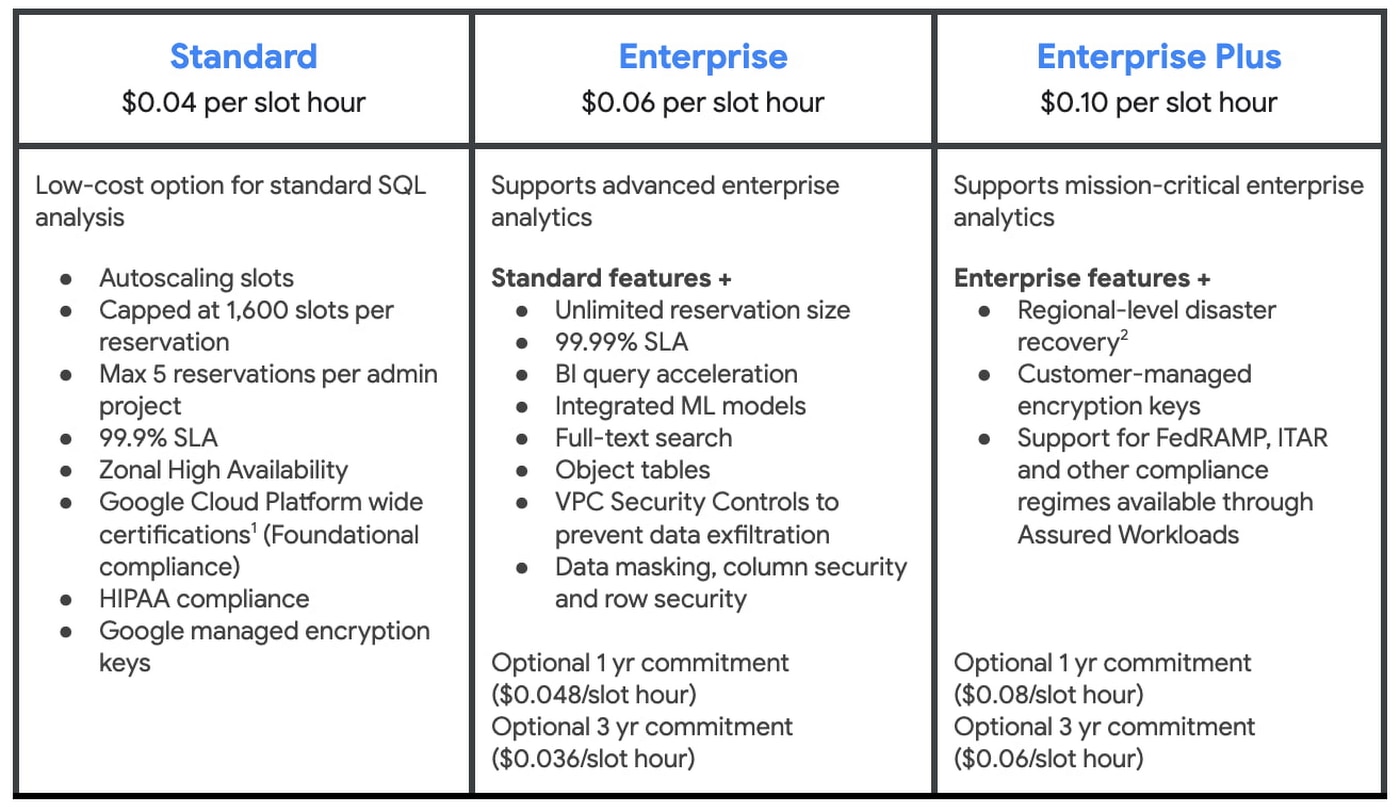Recently, Google announced substantial changes to its BigQuery service, which came into effect on July 5, 2023. This blog post is dedicated to helping you understand these modifications and the potential impact they could have on your GCP’s costs, thereby enabling you to make informed decisions during your FinOps journey.
Google BigQuery is an enterprise-level, serverless and highly scalable multi-cloud data warehouse that offers fast SQL queries and interactive analysis of massive datasets. BigQuery is designed to process queries on large datasets using Google’s infrastructure. Its serverless approach abstracts the underlying infrastructure, allowing you to focus on analyzing data and finding insights.
What’s New?
Google is rolling out a new consumption and reservation model for BigQuery, dubbed BigQuery editions. The model introduces a tiered pricing structure with curated feature sets catering to different workload needs. All editions come with a new autoscaler functionality that promises fully elastic, dynamic scaling of BigQuery compute resources, eliminating the need for pre-provisioning capacity.
Why Does It Matter?
This major shift aims to provide users with more options to tailor their spending based on workload type and size. Nevertheless, these improvements also mean a 25% price increase for BigQuery on-demand analysis (pay-per-query pricing) to account for enhancements in serverless functionality and performance.

Key Changes to Look Out For:
- Editions: BigQuery will now have three editions – Standard, Enterprise, and Enterprise Plus, each with different capabilities and price points.
- Pricing Changes: The modifications will affect all customers with existing BigQuery reservation spend (flat-rate or flex slots) and those using BigQuery on-demand analysis.
- Migration: Previous flat-rate and flex slot reservations were converted automatically to the BigQuery editions, with new pricing effective from July 5, 2023.
Key Actions to Perform
- Analyze Your Usage: Review your current usage of BigQuery and consider the implications of these changes on your costs.
- Prepare for Migration: If you’re under the flat-rate model, coordinate with your teams to plan for workload transitions to the new editions model.
- Evaluate Commitments: Contemplate adjusting your capacity configuration to avail optional 1-year or 3-year capacity commitments (available in Enterprise and Enterprise Plus editions) for potential cost savings.
- Capitalize on Autoscaling and Compression: With BigQuery’s new granular autoscaling and compression features, you might be able to reduce your current committed capacity by 30-40%.
- Optimize On-Demand Usage: For those continuing with on-demand analysis, think about optimizing your queries for cost-effectiveness. Efficient query design, partitioning, and clustering can maximize your on-demand usage benefits.
These changes offer flexible pricing options, the ability to mix and match editions, and multi-year usage discounts, all contributing towards improved cost predictability and lower total cost of ownership.
At GlobalDots, we acknowledge that navigating these changes can be complex. With two decades of experience in cloud innovation, comprehensive FinOps expertise, and a proven track record of cost optimization management for companies such as Gong, SentinelOne, and Lufthansa, we are well-equipped to guide you through this transition. Our goal is to help you strategically optimize your costs and usage in response to these new developments, leveraging our vendor-agnostic approach and multi-domain knowledge. Contact us today to get started, or get a free cost savings assessment in 90 seconds.






